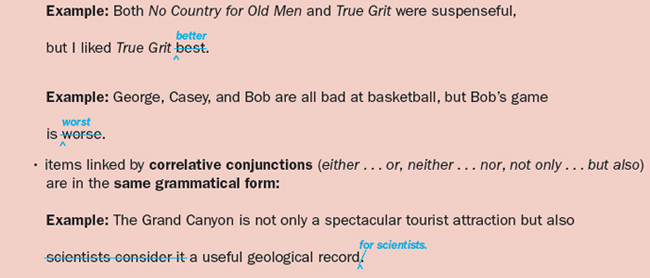
|

|

Select an essay topic from the list above, or create one of your own. Consider your learning style when choosing subjects.
- Some topics are concrete (comparing public figures), while others are more abstract (comparing communication styles or cultural views). Consider your learning style and choose the option better suited to you.
- If you are a social learner, choose subjects with which your classmates are familiar so that you can discuss your subjects with them. Try group brainstorming about various subjects.
- Social and creative learners might prefer comparing artists’ personalities or styles. Verbal and rational learners might prefer comparing opposing arguments.
Consider your interests and experiences: Choose subjects that you already know about, want to learn more about, or have experience with. Brainstorm, alone or in groups, a list of subjects you would like to write about. Since comparison and contrast can work with any two comparable subjects, you should be able to find a subject you and your reader will find engaging. |

Consider your purpose and audience, and choose a basis for comparison. Ask yourself these questions.
- Will my essay’s purpose be to express myself, inform, or persuade? What basis of comparison will work best, given my purpose? To inform readers about two football positions, you could compare the height, weight, skills, and training of players at each position. To persuade readers that one quarterback was better than another, you could compare the number of interceptions, completions, and passing yards of each.
- Who is my audience? How much do my readers already know about the topic? What kind of supporting details will they find convincing and engaging? Readers who are football fans will need different information from those who do not watch the sport.
|

Explore your subjects and develop points of comparison. Keeping your learning style in mind, explore how your two subjects are similar, how they are different, or both.
- Create a two-column list of similarities and differences. Jot down ideas in the appropriate column. (Rational, pragmatic, and verbal learners may prefer listing.)
- Ask a classmate to help you brainstorm by mentioning only similarities. For each similarity, generate a difference. (Creative and social learners may prefer brainstorming.)
- Use visualization. Draw a sketch of your subjects. (Concrete, spatial, and creative learners may prefer visualization.)
- Create a scenario in which your subjects interact. For example, if your topic is the cars of today and the cars of 1950, imagine asking your grandfather to drive a 2014 luxury car. How would he react? What would he say? (Emotional learners may prefer scenarios.)
|

|

Draft your thesis statement. Your thesis statement should . . .
- identify the subjects,
- suggest whether you will focus on similarities, differences, or both, and
- state your main point.
An effective thesis will also engage your readers, telling them why your comparison or contrast is important, surprising, or useful. Team up with a classmate to review each other’s thesis statement. Try to identify the subjects for comparison, the focus, and the main point. If these are unclear or ineffective, offer suggestions for improvement. |

Choose a method of organization.
- Point-by-point often works better for lengthy essays (because it keeps both subjects current in the reader’s mind) and for complicated or technical subjects.
- Subject-by-subject organization tends to emphasize the larger picture.
If you are not sure which will be most effective, create an outline or graphic organizer for both patterns to see which works better. |

Write a first draft of your comparison or contrast essay.
- The introduction should spark your readers’ interest, introduce your subjects, provide any necessary background information, and include your thesis.
- The body paragraphs should include topic sentences that focus on a point of comparison.
- For point-by-point organization, discuss the subjects in the same order for each point, and arrange your points of comparison logically, from simplest to the most complex, for example.
- For subject-by-subject organization, cover the same points for both subjects in the same order in both halves of your essay, and use transitions such as similarly, in contrast, on the one hand, on the other hand, and not only . . . but also to alert readers as you switch from one subject to the other.
- The conclusion should remind readers of your thesis and offer a final comment on your comparison or contrast. If your essay is lengthy or complex, consider summarizing your main points in the conclusion.
|

|

Use Figure 16.4, “Flowchart for Revising a Comparison or Contrast Essay,” to evaluate and revise your draft. |

|

Edit and proofread your essay.
- editing sentences to avoid wordiness, making your verb choices strong and active, and making your sentences clear, varied, and parallel, and
- editing words for tone and diction, connotation, and concrete and specific language.
When proofreading, make sure . . .
- you use the correct form of adjectives and adverbs when comparing two items (comparative) or three or more items (superlative).
|
Positive |
Comparative |
Superlative |
| Adjectives |
sharp |
sharper |
sharpest |
| Adverbs |
early |
earlier |
earliest |
|















